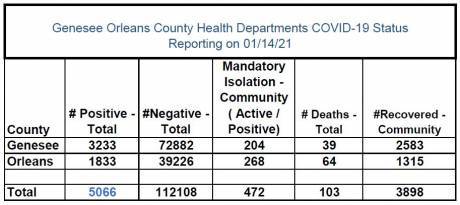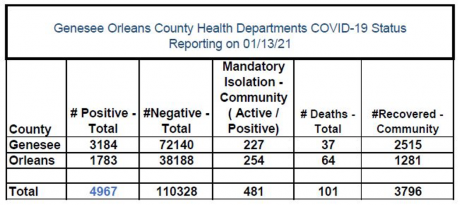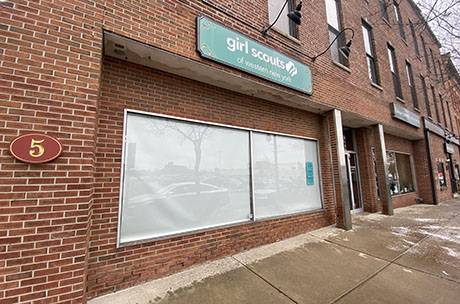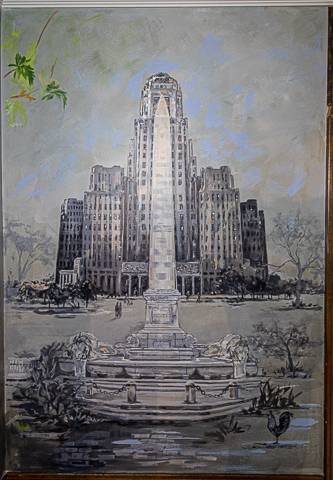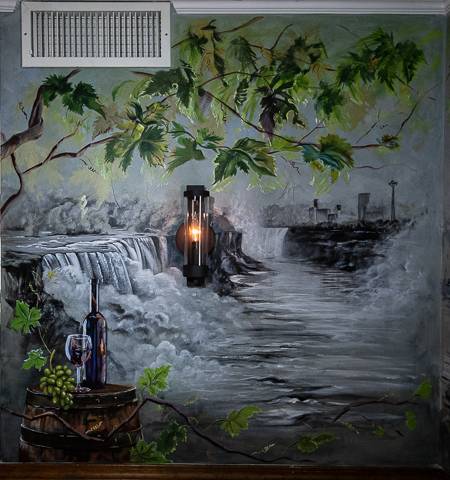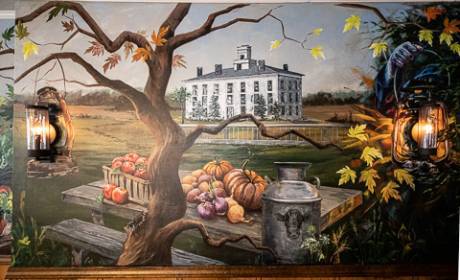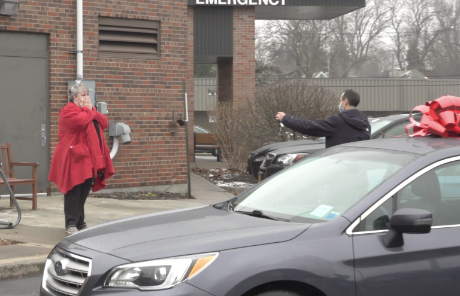Senators say Feds failure in vaccine distribution must be fixed to get all New Yorkers vaccinated ASAP
Press release:
As New York embarks on phase 1B of its COVID-19 vaccination rollout, U.S. Senator Charles E. Schumer and U.S. Senator Kirsten Gillibrand today called out the Department of Health and Human Services’ (HHS) failure to develop and implement a comprehensive national vaccine plan, despite having months to do so, and demanded the Department take immediate action to fix the significant failures of the COVID-19 vaccine distribution process.
The senators said they have been requesting HHS work and communicate with state, local, tribal, and territorial governments, vaccine and PPE manufacturers, public health experts, and health care providers for months to develop a plan for COVID-19 vaccine distribution and administration.
“The biggest thing we want to ensure about the coronavirus vaccine is access. The vaccine must be available to whoever needs and wants it,” Senator Schumer said. “By refusing to work with local governments to implement a national vaccine plan, HHS is failing New Yorkers who are earnestly waiting their turn for a vaccine, and they must step up to address the health inequalities and distribution failures. In order to succeed in the collective goal of public health, I am demanding that HHS fix its broken distribution plan and work with municipalities to get New Yorkers vaccinated ASAP.”
Senator Gillibrand said: “New York’s health systems have been stretched to the limits and as the virus surges across the state, federal support is necessary to effectively distribute and administer vaccines. The Trump administration’s lack of leadership has hampered our nation’s vaccine distribution and resulted in doses of vaccine expiring before reaching Americans.
"Even in the final days of this administration, it’s crucial that they enact a robust federal plan to allow the incoming Biden administration to quickly reach every American in need of the vaccine. The Biden administration should not have to start from scratch to form close partnerships with state and local governments in order to deliver detailed guidance and essential resources to speed up vaccine administration.”
Schumer and Gillibrand underscored that a successful plan must include guidance and best practices on taking the vaccine from distribution to administration, provide all necessary resources to state, local, Tribal, and territorial governments and other jurisdictions, account for the significant challenges jurisdictions face in scaling up their workforces, and act to ensure vaccine distribution efforts also combat health inequities.
The senators also called for HHS to launch a massive public facing campaign to promote vaccine confidence and help people understand where, when and how to get vaccinated.
In the coming weeks, the senators emphasized that HHS must engage with states to proactively identify and address challenges to ensure COVID-19 vaccines are quickly and equitably distributed and administered across the country.
Additionally, Senator Gillibrand recently called for the passage of the Health Force, Resilience Force, and Jobs to Fight COVID-19 Act to address the nation’s lagging vaccine campaign by investing billions in local public health infrastructure and recruiting, training and employing hundreds of thousands of Americans to administer and distribute vaccines, particularly in underserved communities.
Community-based public health jobs and resources, like those created by the Health Force, are known to improve local vaccine education, outreach, and vaccination rates. The Health Force proposal would ensure the federal government has a proactive and coordinated approach to vaccine distribution and administration –including delivering $40 billion a year, for the first two years, to meet the COVID-19 vaccine distribution needs and address the various public health challenges caused by the pandemic.
Senator Schumer and Senator Gillibrand’s letter to HHS Secretary Alex Azar, signed alongside 43 other senators appears below:
Dear Secretary Azar:
We write to you with concerns about significant challenges in COVID-19 vaccine distribution and administration across the country and to outline key actions the Trump Administration should have taken—and must now take—to address these challenges. With our health system and economy in crisis, and millions of lives at stake, we cannot afford for this vaccination campaign to continue to be hindered by the lack of planning, communication, and leadership we have seen so far.
President Trump tweeted on January 3rd that “the vaccines are being delivered to the states by the Federal Government far faster than they can be administered!” That should have been an indicator of a failed vaccine roll out, not a point of pride. It is the federal government’s role to ensure states, Tribes, localities, and the public are receiving the resources and support they need, rather than requiring every jurisdiction to manage on their own without the benefit of the national resources and perspective that only the federal government can provide.
Since July, we have been calling on the Trump Administration to work with states, Tribes, and localities, vaccine and PPE manufacturers, public health experts, congregate care settings, and other health care providers to develop a comprehensive, national plan for vaccines. Since September, when the Centers for Disease Control and Prevention (CDC) and Operation Warp Speed (OWS) first published their playbook and strategy for vaccine distribution, state, Tribal, and local health departments have said that they need clear communication, transparent decision-making, evidence-based guidance, and financial resources to effectively implement vaccine administration plans.
Despite months to plan, the Trump Administration has failed to meet these needs or deliver promised doses to jurisdictions, and as a result of this lack of planning, only 36 percent of distributed vaccines have been administered.
We hope the recently announced efforts to scale up vaccinations in pharmacies will help to turn this tide but it is clear much more is needed. States, Tribes, and localities, providers, and the public are being left without federal support or clear, complete information about what to expect in the future as nearly 300,000 Americans fall ill daily from this virus.
In order to avoid these failures, the Trump Administration should have issued and implemented a comprehensive national vaccines plan, including detailed guidance and an infusion of resources to support states. Federal responsibility does not end with delivery of vaccines to states, as you have suggested. Vaccine administration must be a close partnership between the federal government and state, Tribal, and local governments, with the federal government stepping up to ensure that all needs are met.
A vaccine allocated on a spreadsheet, or even a vaccine distributed and sitting on a shelf, is not enough to protect anyone. The metric that matters, and where we are clearly moving too slowly, is vaccines in arms. A comprehensive national plan should:
- include robust guidance for states, Tribes, localities and health care providers including on personal protective equipment (PPE) usage, vaccine administration prioritization, and best practices for taking the vaccine from distribution to administration;
- specify how the Federal government will support these entities with funding, supplies, information, and personnel—which thus far the Trump Administration has failed to do; and
- account for the significant challenges jurisdictions face in scaling up their workforces while continuing other lifesaving public health work, which may include providing increased support for mass vaccination clinics and mobile testing units, as well as supplementing the vaccination workforce including vaccinators, logistical support, and more.
In the absence of this long-overdue national plan, it is all the more important that the Trump Administration actively engage with state planning efforts in the coming days, identify challenges across distribution and administration, and proactively address problems that arise in partnership with jurisdictions.
In order to support the efforts outlined in a comprehensive, national plan, the Trump Administration must also quickly provide robust vaccine distribution funding to States, Tribes, and localities. In advance of vaccine distribution efforts commencing, the Department of Health and Human Services (HHS) had provided just $617 million in funding to states for vaccine efforts—this amount was woefully inadequate. In fact, the Trump Administration falsely stated as recently as November that States did not need funding for vaccine distribution.
Ultimately, Congress provided $8.75 billion for vaccine distribution efforts in the recently enacted COVID relief bill which will meaningfully help states execute their vaccine administration plans. The bill requires a portion of this funding to be sent to states within 21 days, and President Trump’s delay in signing this legislation should not further delay the distribution of these funds.
We recognize that the CDC announced the availability of $3 billion for states for vaccination activities, but we cannot afford a repeat performance of this Administration’s decision to sit on billions of dollars in testing funds when states urgently needed them.
The Trump Administration must ensure strong support reaches jurisdictions as soon as possible to support their critical work. The challenges we are seeing in vaccine distribution also underscore the need for robust and permanent investments in public health infrastructure to get us out of this cycle of crisis and response.
The Trump Administration must act to correct the lack of transparency and communication from the federal government around COVID-19 vaccine distribution and administration. Over the first two weeks of vaccine distribution, more than a dozen states found their actual vaccine allocations fell significantly below initial OWS allocation forecasts.
For several days, OWS denied these discrepancies, before ultimately admitting officials had provided states with flawed numbers. Even now, states are given just one week of advanced notice about the number of doses they will receive and have been given no information about distribution projections after February.
Local health departments are largely excluded from planning calls with OWS and CDC, even though they often ultimately receive and administer vaccines. There is no federal plan to publicly release sufficient data on vaccinations in long-term care settings, where more than 133,350 residents have died, accounting for 37 percent of all deaths from COVID-19.
The federal Pharmacy Partnership for Long-Term Care Program, which states expected to rely on to support vaccination of these particularly vulnerable populations, has administered only 17 percent of the vaccines distributed to these facilities to date.
Jurisdictions and health care providers are not the only ones in the dark; members of the public do not know when, where, or how they will be able to be vaccinated. CDC already supports a national portal to provide information to the public on where they can receive flu vaccines and other vaccines; the public needs this and more information when it comes COVID-19 vaccines, which should be broadly publicized.
Furthermore, while some states are taking steps to educate providers and the public to improve communication and build trust, the Trump Administration has failed to meaningfully address vaccine confidence, after spending months directly undermining such confidence by casting doubt on our nation’s world-class scientists and scientific agencies.
The Trump Administration should launch a long-overdue, large-scale public awareness campaign and work with leaders in communities across the country to provide science-based information to promote high vaccination rates. The federal government must play a proactive role in improving transparency and communication with public health departments and the American people.
Finally, the Trump Administration must also act to ensure vaccine distribution efforts combat rather than exacerbate the health inequities that have been laid bare by the COVID-19 pandemic. A failure to plan strategically and proactively for vaccine distribution means communities of color, residents of congregate care facilities, rural communities, and other populations disproportionately at-risk will remain neglected in our pandemic response.
This is especially true for the millions of health care workers of color who provide the daily care and support for residents of congregate care settings and who provide home health care. We have seen the toll this pandemic has taken on vulnerable communities, and the egregious health disparities that have resulted from this pandemic, and we must act to combat these inequities.
Since FDA granted the first emergency use authorization for a COVID-19 vaccine, only 2 percent of Americans have been vaccinated. In that same time, the United States passed 20 million cumulative cases of COVID-19 and saw a new record in daily deaths from COVID-19 when over 4,085 Americans died on January 7.
Of the 20 million doses promised by the end of 2020, only 4 million doses were administered before the end of the year. In light of this failed vaccine rollout amidst a surge in COVID-19 cases and deaths, we urge you to finally take the steps necessary to ensure COVID-19 vaccines are quickly and equitably distributed and administered across the country.

